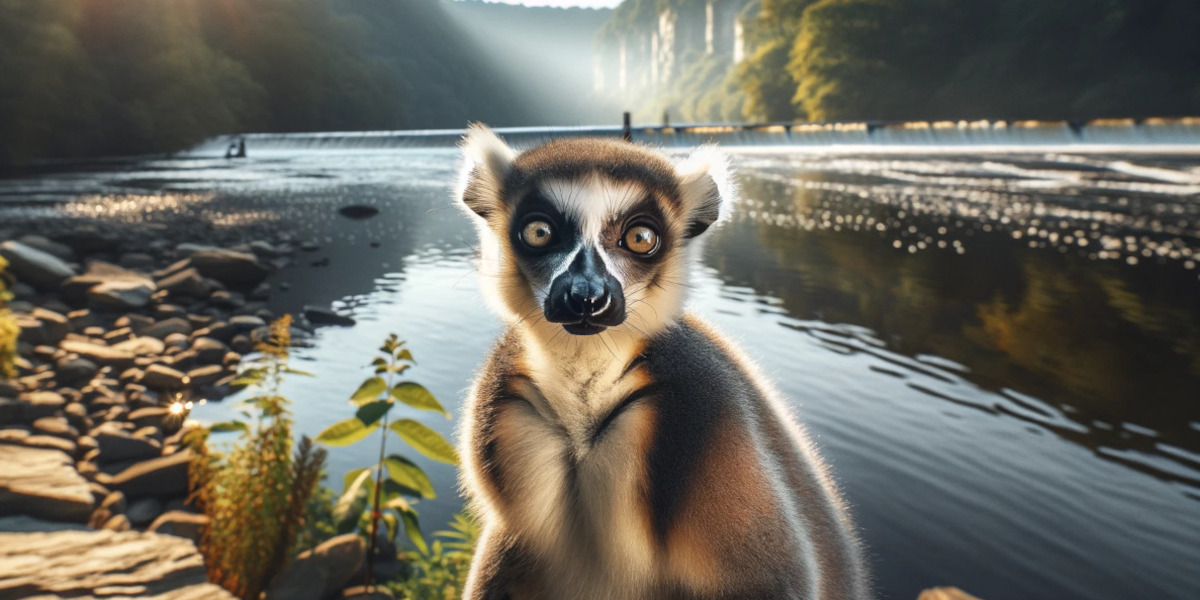
Introduction
Lemurs, with their wide, curious eyes and playful demeanors, are among the most distinctive and endearing of primates. Native to Madagascar, an island nation off the southeastern coast of Africa, lemurs have evolved in relative isolation, giving rise to a remarkable variety of species.
The habitat of lemurs is highly specific, primarily the unique ecological conditions of Madagascar. These conditions include dense rainforests, spiny forests, and dry deciduous forests, each supporting different lemur species adapted to these environments.
As to the question, “Do lemurs live in Delaware?” The straightforward answer is no. Lemurs are not native to Delaware or any other part of the United States. They are endemic to Madagascar and a few neighboring islands.
Any lemurs found in Delaware would be in captivity, such as in zoos or wildlife sanctuaries, and not in the wild. The climate and ecosystems of Delaware are vastly different from the natural habitats of lemurs in Madagascar, making it an unsuitable environment for their survival in the wild.
Delaware’s Wildlife and Ecosystem

Overview of Delaware’s Natural Ecosystem
Delaware, though small in size, boasts a surprisingly diverse range of ecosystems. This diversity is a product of its geographical location, nestled on the Atlantic coast of the United States, and its range of environments, from coastal wetlands to deciduous forests.
The state’s ecosystems can be broadly categorized into several types: coastal and estuarine ecosystems, including salt marshes and tidal creeks; forested areas, which cover a significant portion of the state; and freshwater systems, such as rivers, streams, and ponds.
The coastal and estuarine ecosystems are crucial breeding grounds for a variety of marine and bird species. The Delaware Bay, for example, is renowned for its horseshoe crab population, which plays a vital role in the survival of migrating shorebirds.
Forested areas are home to a wide array of wildlife, including white-tailed deer, red and gray foxes, and various bird species like the American Goldfinch, Delaware’s state bird.
Freshwater systems support species such as the American beaver, numerous fish species, and amphibians like the Northern leopard frog.
Presence of Non-native Species in Delaware
Several non-native species have been introduced intentionally or accidentally and have thrived in Delaware’s habitats. Examples include the nutria, a large, aquatic rodent originally from South America, which was introduced for fur farming but has since become an invasive species in wetland areas.
Another example is the mute swan, an invasive bird species from Europe and Asia, known for its aggressive behavior towards native waterfowl.
These introductions often occur through human activities such as trade, travel, and animal husbandry. Some species were brought for agricultural purposes, while others escaped or were released from captivity. The thriving of these non-native species in Delaware’s ecosystems is a complex issue.
On one hand, it showcases the adaptability of certain species to new environments. On the other hand, it raises concerns about the impact on native species and habitats, as these introduced animals can compete for resources, prey on native wildlife, or disrupt local ecological balances.
Are There Lemurs in Delaware? Everything You Need to Know

Lemurs in the Wild vs In Captivity in Delaware
When addressing the presence of lemurs in Delaware, it’s crucial to distinguish between wild and captive environments. In the wild, lemurs are exclusively native to Madagascar and a few surrounding islands.
There are no naturally occurring populations of lemurs in Delaware or anywhere else outside their native range. Lemurs have developed unique adaptations for the specific ecological conditions of Madagascar, and these conditions are not replicated in Delaware’s environment.
However, lemurs can be found in captivity in Delaware. Zoos, wildlife sanctuaries, and potentially private collections may house lemurs.
These facilities are designed to mimic the natural habitat of lemurs to varying degrees, providing them with the necessary care and environment to thrive outside their native habitat. Captive settings often aim to educate the public about these unique animals and the challenges they face in the wild, such as habitat loss and poaching.
Conservation and Legal Aspects of Lemurs Living in Delaware
The legal framework governing exotic animals, including lemurs, in Delaware is quite strict. The possession, importation, and exhibition of exotic animals is regulated to ensure animal welfare and public safety. Permits are usually required, and regulations are enforced by state wildlife agencies.
These regulations are in place not only to safeguard the well-being of the animals but also to prevent potential ecological issues that could arise from their accidental release into the wild.
Conservation concerns are also a significant aspect of the discussion regarding lemurs in Delaware. Lemurs are among the most endangered groups of vertebrates on the planet. Many species are facing critical threats due to habitat destruction, illegal wildlife trade, and hunting in their native Madagascar.
Conservation efforts in captivity, including breeding programs in zoos and sanctuaries, play an important role in the broader context of lemur conservation. They help raise awareness about these animals’ plight and can contribute to conservation research and efforts to protect and restore natural habitats in Madagascar.
Conclusion
In conclusion, lemurs do not naturally live in the wilds of Delaware. They are only found in controlled, captive environments such as zoos or wildlife sanctuaries. These settings provide a glimpse into the world of these extraordinary animals but are far from their natural habitat.
While you won’t find lemurs roaming the forests or wetlands of Delaware, the state does play a role in lemur conservation. Through education, captive breeding programs, and public awareness, Delaware contributes to the global effort to conserve these unique animals and their habitats.




